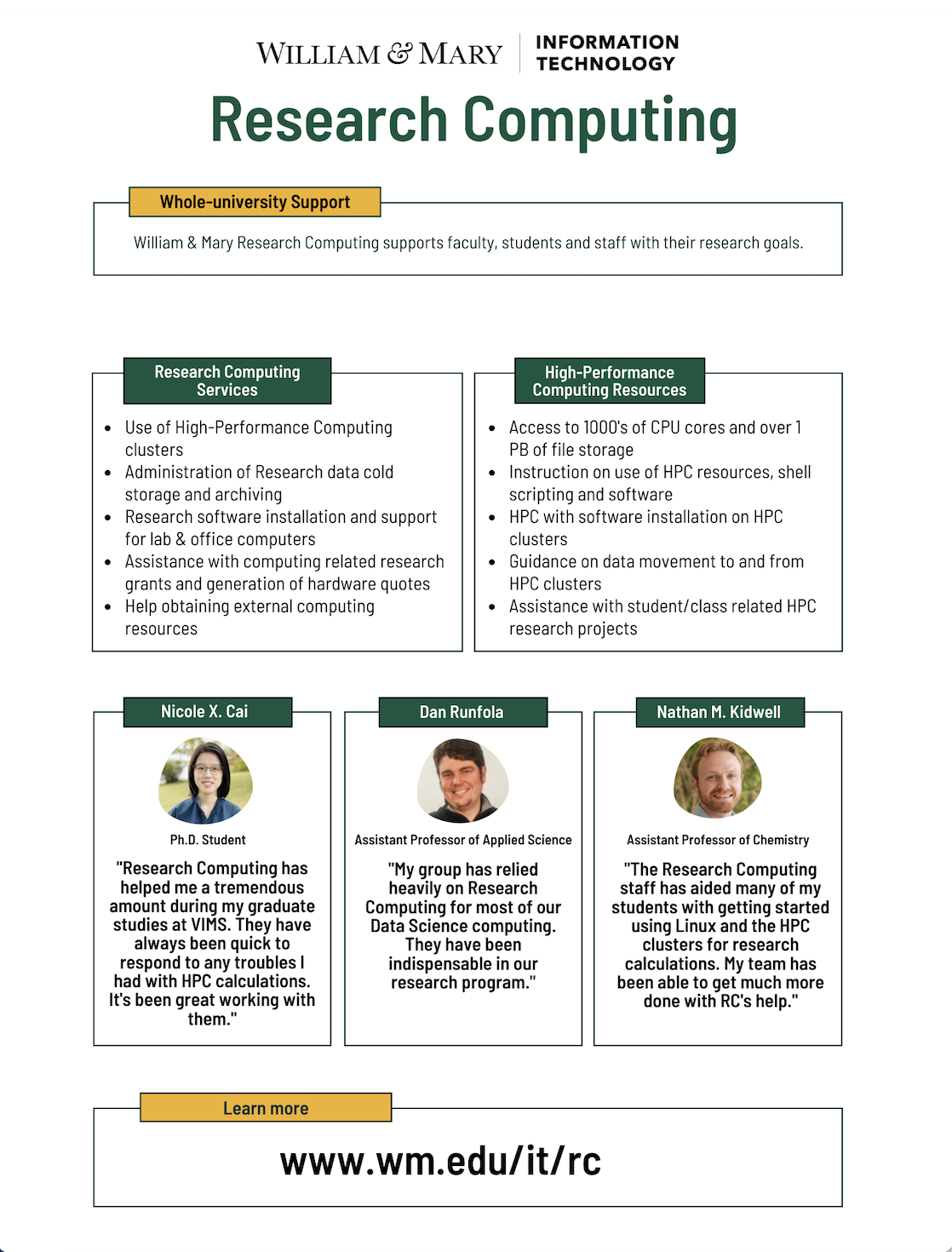Research Computing
What's been going on in RC since July 2021?
Campus Cyberinfrastructure (CC*) grant
 We were awarded a Campus Cyberinfrastructure (CC*) grant for $491,051 to improve file transfer and networking between VIMS and main campus, within the High Performance Computing (HPC) cluster, from researchers' offices to HPC and from HPC to external sites.
We were awarded a Campus Cyberinfrastructure (CC*) grant for $491,051 to improve file transfer and networking between VIMS and main campus, within the High Performance Computing (HPC) cluster, from researchers' offices to HPC and from HPC to external sites.
The grant will enable us to improve connections for people pushing data back and forth, address all connections to HPC and allow for offices to get upgrades to have faster connections.
Major Research Instrumentation Grants
This year we also submitted two MRI grants. One to obtain a large homogeneous cluster (in collaboration with VIMS and W&M HPC users), and one to obtain a Graphics Processing Unit (GPU) cluster (in collaboration with high-energy physics).
Increasing support for research computing
Research Computing has hired an additional staff member to extend our support to research on Linux workstations.
Equipment upgrades
- New fileserver for user home directories to replace old hardware.
- New fileserver for scratch space (~300 TB) to replace old hardware.
- New 1.5 PB Lustre parallel filesystem for faster scratch space.
- An additional tape library shelf and two new LTO7 tape drives for more backup capacity – needed to accommodate research cold storage.
- All equipment is operational and/or being tested.
Increasing diversity in HPC and related opportunities
- Director of Research Computing Eric Walter joined and is an active member of a group called Virginia Women in HPC that is working to increase diversity in HPC and related communities.
- This will be done through giving participants opportunities for networking with other HPC professionals outside of W&M.
Future goals
- Acquire large new cluster to start making things more homogenous in HPC.
- Greatest complication in current HPC is many small clusters with different architectures/software stacks. A new cluster would also enable larger parallel jobs to be completed.
- Continued outreach to users that need computing support.
- JupyterHub sites for research computing to give users easier interface for computing.
- More containers in HPC to enable users to self-serve new software more easily.
- Curation of Linux images for users to install on workstations/desktops that will come with important computational packages.
- More training sessions for basic Linux/HPC usage/computational research best practices.
 Skip to main content
Skip to main content
